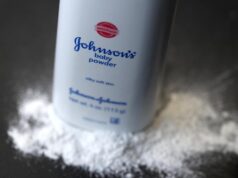If you have spirals, coils, or waves, you already know that having curly hair isn’t just a trait; taking care of it, is a lifestyle. While not biologically different from straight hair, curly hair comes with its own set of needs that expand or contract based on porosity (we’ll cover that), curl pattern (we’ll definitely cover that), and the products you use (yep… we’ll get to those, too). Add the fact that many folks actually have different kinds of curls growing out of different parts of their scalp, and you’ve got a recipe for confusion — and more than enough material for a full episode of The Science of Beauty podcast.
So with help of cosmetic chemist Erica Douglas, our hosts Michelle Lee, editor in chief, and Jenny Bailly, executive beauty director, set out to explain what curls actually are, debunk some common myths, and a whole lot more. Read on for the highlights.
What Makes Hair Curly?
If you put a strand of curly hair under a microscope, it won’t have any biological differences from a straight one. It’s the shape of the follicle each hair grows from that dictates how straight, curly, or coily an individual strand will be, explains Douglas on our episode. “If you have a U- or C-shaped follicle, you’re going to have very curly hair,” she says, adding that follicles with a slight bend produce wavy hair and perfectly round follicles produce straight hair. In addition to follicle shape, the angle at which hair follicles tunnel into the scalp contribute to whether or not hair will curl, wave, or grow in straight. Straight hair follicles tunnel vertically into the scalp while curly and wavy follicles angle into the skin, causing the hair to curve as it grows, eventually creating curls.









